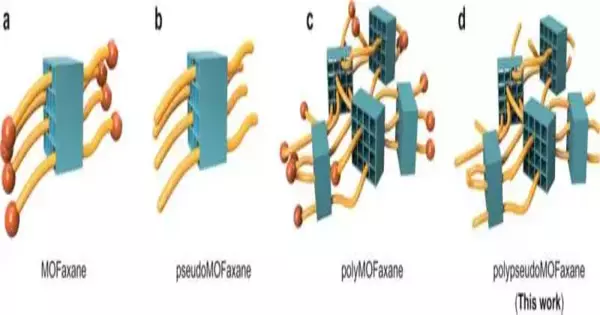By combining rotaxanes and metal-organic frameworks, a group of material scientists and chemists at the University of Tokyo has created a new class of interlocking supramolecular systems. The group combined the two structures and discovered potential applications for the results in their study, which was published in the journal Nature Communications.
Compounds called metal-organic frameworks (MOFs) are made by combining metal ions in a way that creates structures in one, two, or three dimensions. In the field of chemistry, the resulting ligands are referred to as linkers or struts. They are usually used to make things like sensors, energy-storing machines, and liquid separators and purifiers. They have also been used for drug delivery and biological imaging.
Rotaxanes are interlocked, dumbbell-shaped molecular structures. End caps are applied after cyclic molecules are threaded into other molecules. They are typically utilized as shuttles and molecular switches in electronic devices. The research team devised a method for connecting the two kinds of compounds to produce novel types of interlocking structures in this new endeavor.
The fact that MOFs have pores smaller than a nanometer makes them useful for a wide range of applications because they can coordinate interactions with other molecular structures. They also mentioned that rotaxanes are machines in the molecule. They came up with the idea to connect the two structures after looking at them.
They discovered that doing so was fairly simple. Rotaxane polymer chains were simply threaded through copper-based MOF pores. MOFaxanes, as they are known, were created as a result of this. They noted that they were able to reverse the relationships that are typically observed between MOFs and their “guests” by employing extra-long polymers, allowing for greater than usual differences in size between the two. Additionally, they point out that because MOFs are so adaptable, the types and sizes of MOFaxane structures that can be created should be virtually limitless.
More information: Tomoya Iizuka et al, An approach to MOFaxanes by threading ultralong polymers through metal–organic framework microcrystals, Nature Communications (2023). DOI: 10.1038/s41467-023-38835-5





